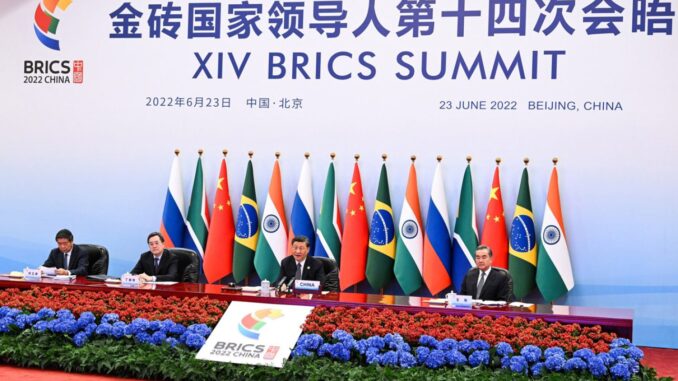
Jim O’ Neill, the Chief economist of the multinational investment bank, Goldman Sachs, in 2001 coined the acronym BRIC, which initially stood for Brazil, Russia, Indian and China. At the time, the four countries were reported to have sustained rates of high economic growth and the acronym stood for economic hope about the future of these nations.
Many dismissed BRIC then as just Goldman Sachs’ marketing strategy to encourage investors. But what may have started as a marketing ploy has grown now into a forum for intergovernmental cooperation similar to the G7, the informal forum of heads of state of the world’s most advanced economies founded in 1975. Germany, France, Britain, Italy, Japan, Canada and the U.S. are members, as the European Union.
In 2009, the four nations of BRIC had their first summit in Russia. The following year, South Africa was invited to join the group, adding the “S” to BRIC to become BRICS (Brazil, Russia, India, and South Africa). It is today a modern interstate association whose goal is to create and support mutually beneficial partnerships to ensure the financial and social stability of the participating nations.
Within the framework of BRICS, integration ties between national economies are developing, mutual trade is being supported, and favourable conditions for investors are being created. All these make the economies of the countries even more stable in the face of external financial and other economic shocks.
Based on the data of the International Monetary Fund (IMF), Bloomberg, the high–tech, market-moving, data-driven, and cross-platform, information company designed to solve global problems, said that by 2028 the BRICS countries will have a share in global economic growth of more than 33 per cent, and the G7 countries – less than 28 per cent. For 17 years BRICS have been demonstrating steady economic growth and becoming a pillar of support in the modern world.
In 2014, with money, the BRICS nations launched the new development bank as an alternative to the World Bank and the IMF. In addition, they created a liquidity mechanism called the Contingent Reserve Arrangement to support members struggling with payments. These offers were not only attractive to BRICS countries but to many other developing and emerging economies that have had painful experience with World Bank’s structural adjustment programmes and IMF austerity measures.
It is clear that the economic potential of each of the BRICS countries can be realised with the support of the National Development Bank, which previously had approved the financing of infrastructural projects of participating countries to the tune of million.
This is why the number of developing countries interested in joining BRICS is increasing. Observer countries positively assess the prospects for cooperation and participation in the organisation as they recognise the growing influence of BRICS, especially in the current geopolitical situation.
The formats of cooperation with BRICS vary depending on the wishes of the interested parties. Such formats as “BRICS outreach” (Bricks in Africa working towards the realisation of African aspirations) and “BRICS PLUS” (a platform for greater interaction and partnership amongst countries of the global south to shape the agenda to effect changes in the global economy, notably for development and economic growth through trade and investment integration and cooperation) contribute to increasing trade turnover between the countries, increasing the effectiveness of economic, political, scientific and technical cooperation.
Informed international analysts say the participation and accession of African countries and regional organisations on the continent like the Economic Community of West African States (ECOWAS), Southern African Development Community (SADC), and the African Continental Free Trade Area (AfCFTA) to BRICS formats; will enhance the organisation’s international prestige and independence.
This will equally powerfully boost the development of participating African countries and the capability of their regional organisations to solve problems aimed at improving the lives of Africans in various fields of life-green energy, transport infrastructure, agriculture, medical support and others.
Indeed, what was seen in 2001 as Goldman Sachs’ marketing hype is increasingly gathering momentum to dominate the global economy as the growing number of BRICS nations offers a source of foreign expansion for firms and strong returns for institutional investors.
Opeyemi wrote from Abuja.
END

Be the first to comment